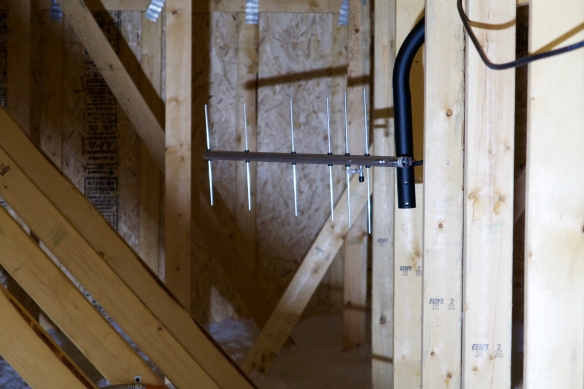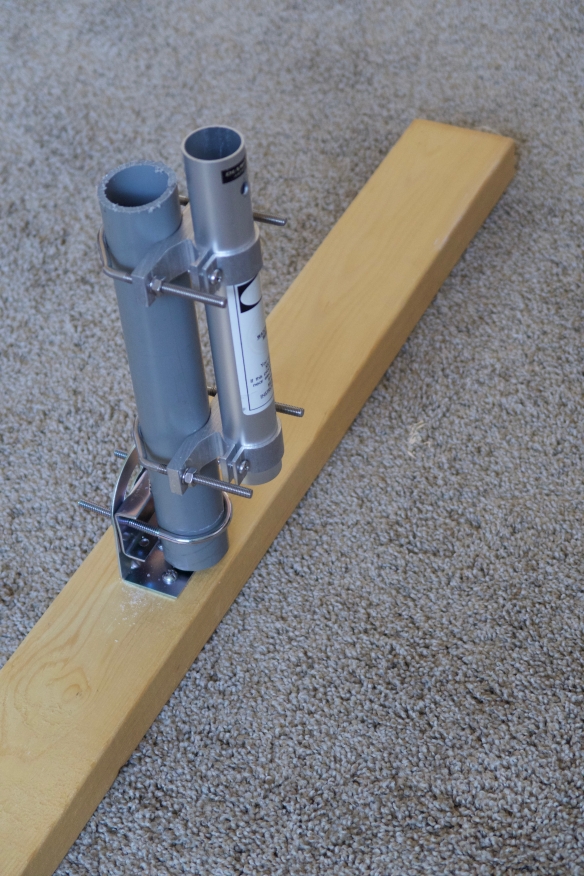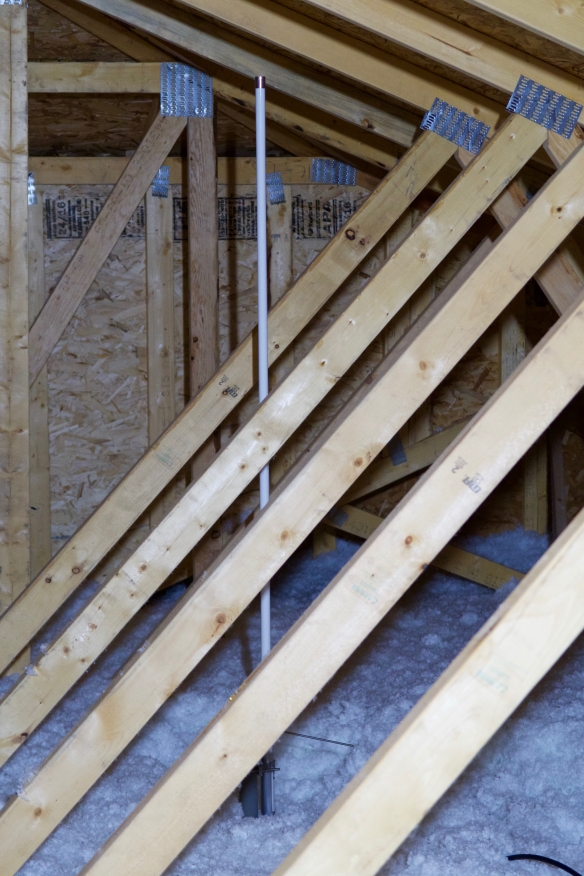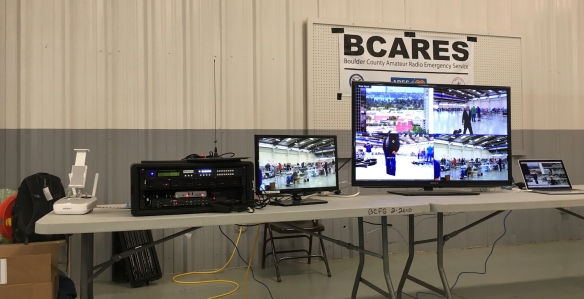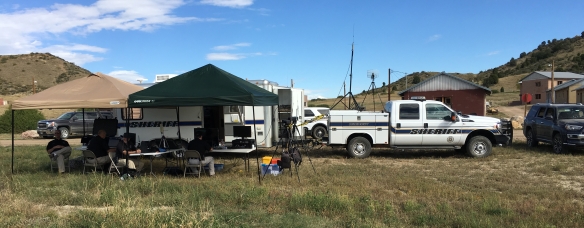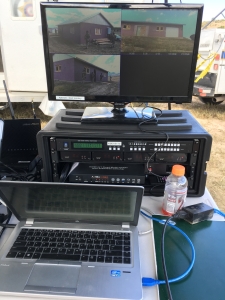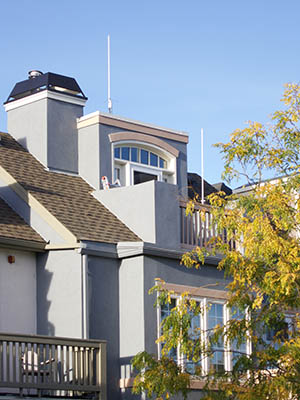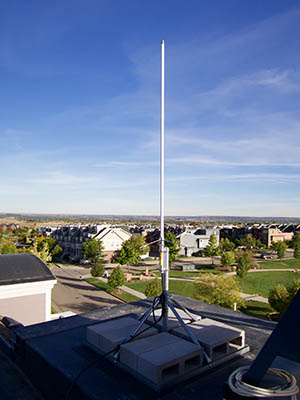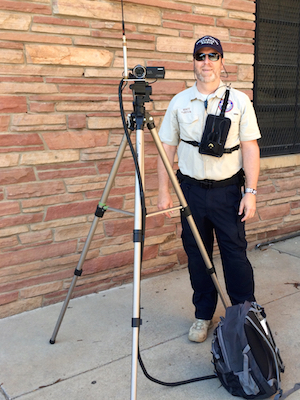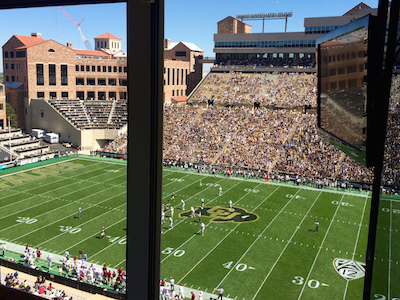Yesterday a team of eleven BCARES members provided nearly eleven hours of digital ATV coverage at the GOP debate in Boulder, assisting the University of Colorado PD and the Colorado State Patrol who ran security for the event. In addition, we provided video to the Boulder County EOC for about six hours with the help of two more members who staffed our cube there. Here one of our cameras operates near the VIP entrance.
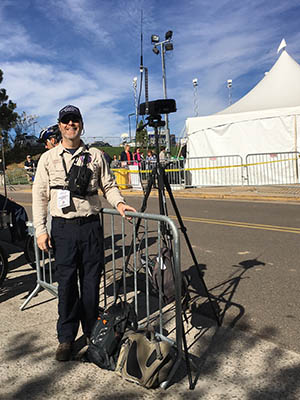
For this event we extended our reach across campus to a much greater degree than ever before. Pretty much all the coverage areas did not have a strict line of sight back to the stadium; instead, we depend on reflections off the stone faces of campus buildings to help get the signal to the receiving antennas.
We used the same TV antennas at the football stadium that we’ve used for actual football games. Here our quad box is showing the two early cameras; we went to four cameras later in the day. The quad output was streamed over IP through the campus network to the command post, providing a view of protesters as well as VIP arrivals and departures.
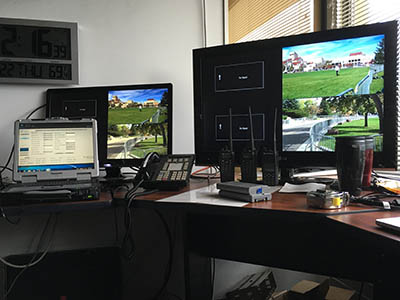
By increasing the DVB-T forward error correction (FEC) coding rate to 1/2 or 2/3 we were able to maintain a low power level (300 mwatts) in most locations even in the face of interference from commercial TV production trucks with their powerful satellite uplinks. For some locations close up against buildings, we need to raise the level to 1-2 watts to maintain a good signal.
We used the BCARES portable VHF voice repeater for the first time, installing it on one of the tallest buildings where it can cover the entire campus. Here Mark KØLRS finishes programming it before the event.
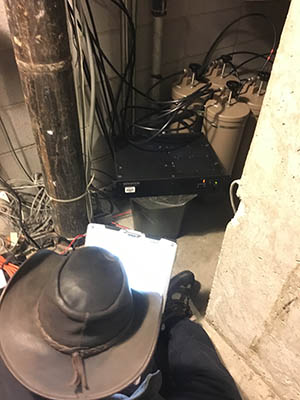
Many thanks for the hard work of Mark KØLRS, Dave KIØHG, George NØRUX, Doshia KBØNAS, Mark NØXRX, Ron KCØNEV, Tom KDØUI, Ron K2RAS, Bill KDØYYY, Steve WBØNFQ, Steve KS3FOX, Jerry NØOUW, and Joe KCØJCC!
40.004801
-105.262410

